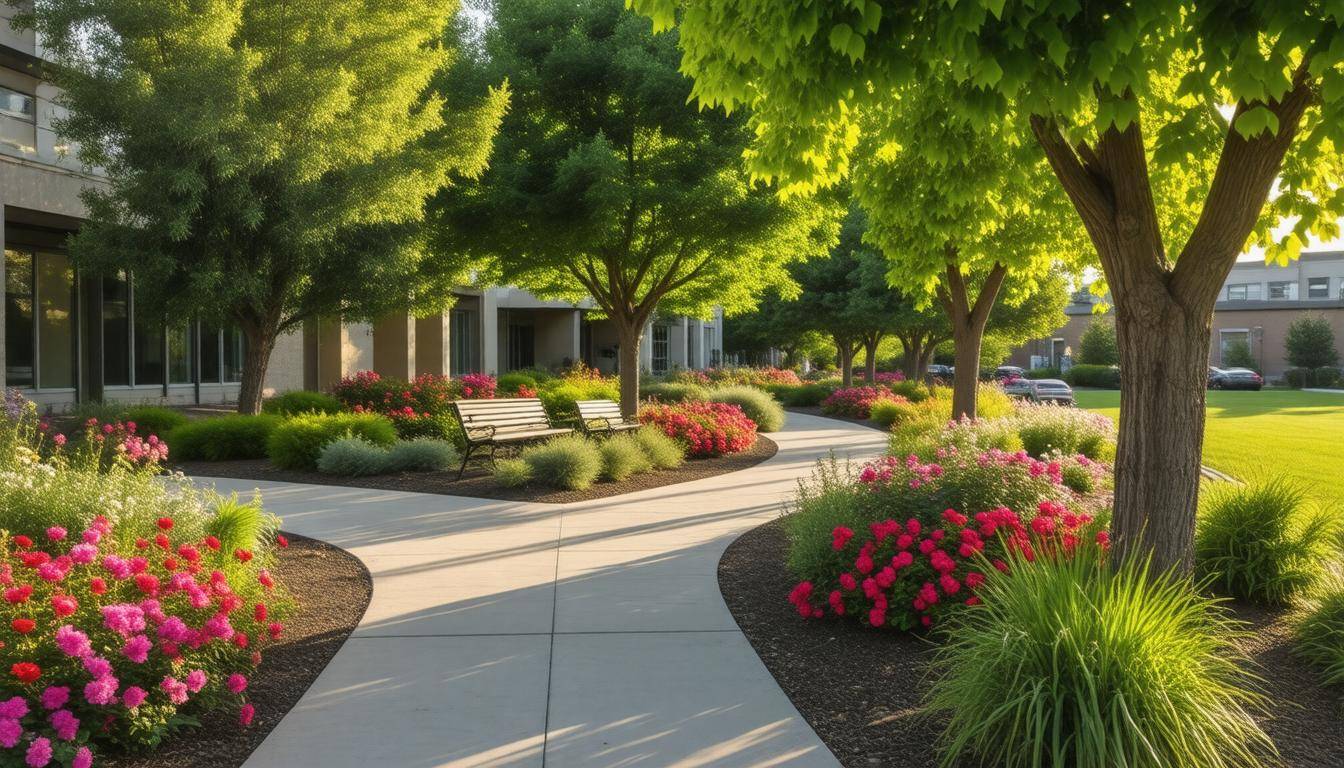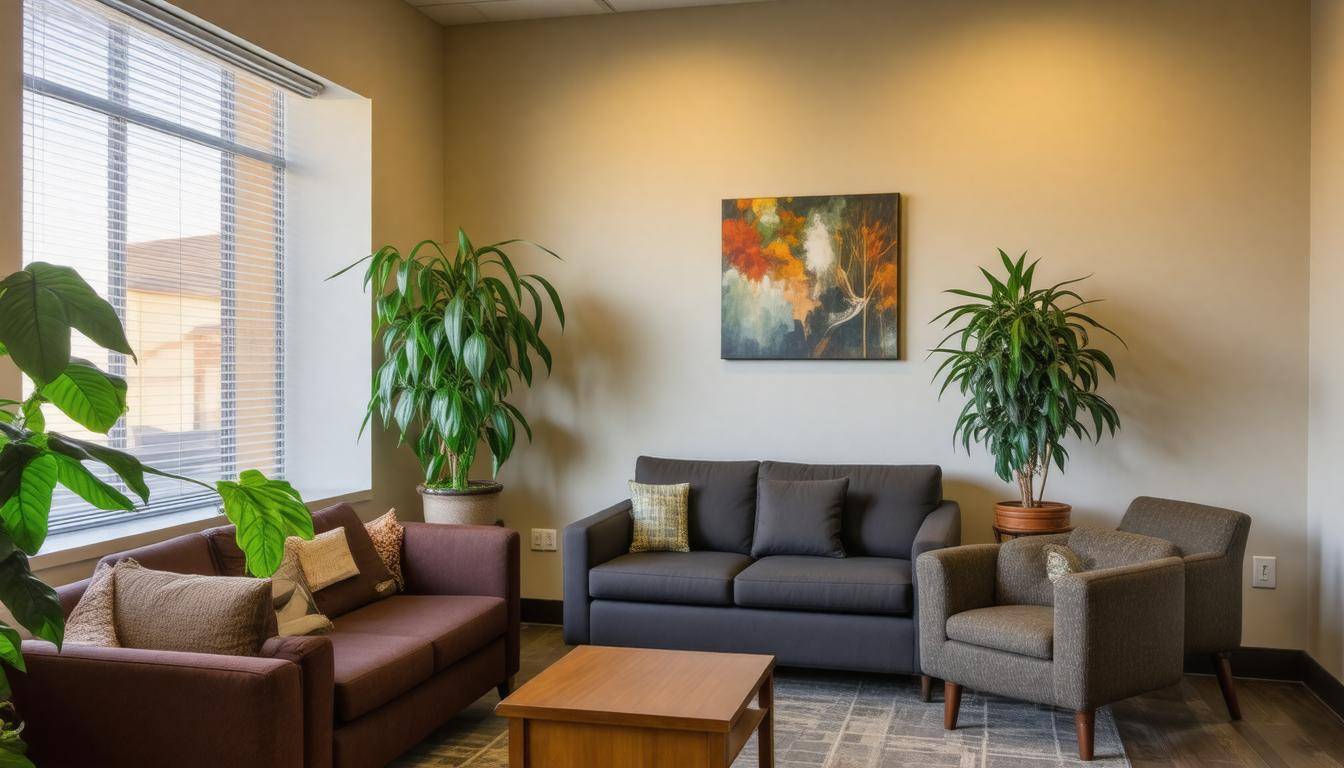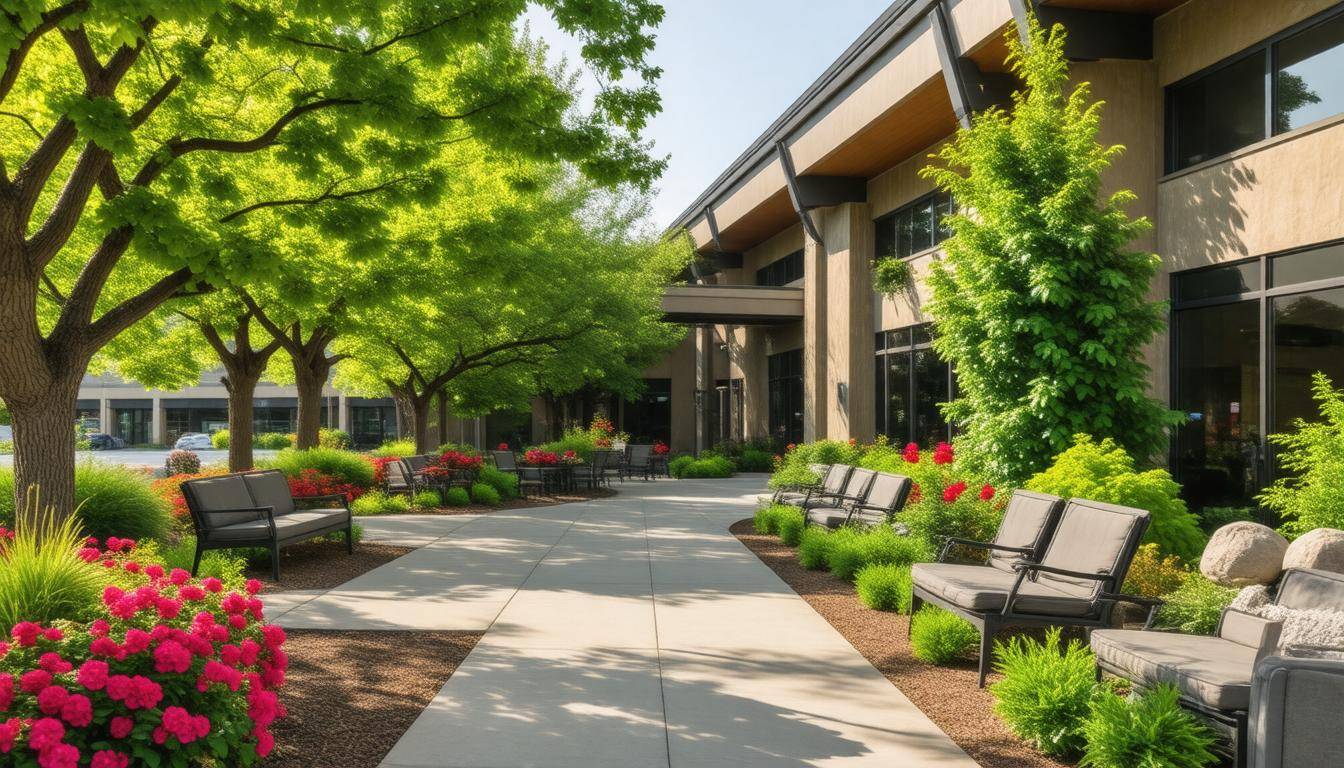Finding the right memory care facility for a loved one can feel overwhelming, especially when faced with the many options and varying levels of care available. It’s not just about selecting a place to live; it’s about ensuring that they feel safe, respected, and supported as they navigate the challenges of Alzheimer's or other forms of dementia. In Salt Lake City, families have access to several top-notch facilities with unique services tailored to create an environment of warmth and engagement. Whether you're looking for a vibrant community atmosphere or specialized memory programs, this guide will help you explore some of the best memory care options available in the area, making your search easier and more informed. Let's dive into what these facilities offer and how they can enhance quality of life for seniors dealing with memory loss.
Salt Lake City offers a variety of memory care facilities that provide specialized support for individuals with Alzheimer's disease and other forms of dementia. These facilities typically feature secure environments, trained staff, engaging activities, and personalized care plans to ensure residents receive the support they need while maintaining a high quality of life.

The first facility to consider is The Terrace at Mountain Creek, renowned for its luxurious and welcoming ambiance. As you step inside, there's a sense of warmth and comfort that invites both residents and visitors alike. The facility prides itself on having a notably high staff-to-resident ratio, meaning every individual receives specialized attention tailored to their unique needs. This approach not only helps residents feel valued but also allows for personalized care plans that evolve with each person's journey through memory loss.
Moving on, we find Sunrise of Holladay, which has established a reputation as a leader in memory care through its innovative Reminiscence Neighborhoods. These neighborhoods are designed specifically for individuals with memory challenges, featuring secure environments and intuitive floor plans. Such layouts minimize confusion and promote independence while maintaining safety. One resident's family member, Mary Jenkins, shared that her mother is treated like family here, emphasizing the strong bonds formed between staff and residents. This sense of community is invaluable for those facing the challenges of dementia.
Another noteworthy option is Beehive Homes of Salt Lake City. This facility takes pride in offering a smaller, more intimate atmosphere, which many families find comforting. Staff members get to know each resident personally, allowing them to create individualized care plans focused on the needs and preferences of each resident. With round-the-clock support and enriching activities designed to stimulate cognitive function, Beehive Homes blends professional care with a sense of belonging that is essential for mental well-being.
Lastly, we cannot overlook The Wentworth at East Millcreek, where innovation meets compassionate care. Rated highly by families, this facility doesn’t just stop at traditional methods; it incorporates music therapy and art therapy into its memory care regimen. These therapies have proven to be effective tools in engaging residents and enhancing their quality of life by tapping into their memories and emotions tied to music and art.
Understanding the distinct features and services available can significantly aid in finding the right fit for loved ones, ensuring they receive the best possible care tailored to their needs. Turning our attention now to explore the various offerings that enhance daily living in these remarkable facilities.
Memory care facilities provide an essential support system designed specifically for seniors grappling with conditions like Alzheimer’s or other forms of dementia. One standout feature is the commitment to comprehensive medical and health services. Most establishments ensure 24-hour supervision, allowing residents to feel secure at all hours.
Medication management is another important aspect; staff are trained meticulously to administer medications as prescribed while maintaining a careful record of any side effects. This structured oversight can lead to better health outcomes, as demonstrated by providers like Sunrise of Holladay, which schedules regular visits from a neurologist every few weeks to address residents' specific medical needs.
Transitioning into personal care services, the focus shifts to the individual dignity and comfort of each resident. Facilities recognize that tasks such as bathing, dressing, and grooming can become challenging for those with cognitive impairments.
For instance, at Beehive Homes of Salt Lake City, there’s a dedicated team whose sole purpose is to ensure that residents receive assistance tailored to their personal needs. This team plays an instrumental role not just in promoting hygiene but also reinforcing self-esteem among residents by ensuring they look and feel their best each day.
Moving forward, therapeutic activities emerge as another cornerstone of care within these facilities. Engaging seniors through carefully curated programs fosters both mental stimulation and social connections vital for overall well-being. These programs can range from simple cognitive stimulation exercises to more dynamic activities designed to cater directly to the interests of residents.
The Terrace at Mountain Creek stands out in this regard by offering specialized sessions focused on memory development alongside traditional physical therapy.
It's clear that quality services hinge significantly on the expertise and dedication of caregivers and staff, making staffing a critical consideration when selecting a memory care facility. With this in mind, we now turn our attention to the professionals who make these supportive environments possible.
The heart of any memory care facility lies in its dedicated professional caregivers. These are not just employees; they are the lifeblood that nurtures and maintains the emotional and physical well-being of residents. Compassionate, trained individuals understand that providing care for seniors with memory impairments requires a unique approach. It’s more than just assistance; it’s about creating a nurturing environment where residents feel safe and respected.
Rigorous training programs are fundamental in preparing staff for the challenges that come with memory care. Facilities like The Wentworth at East Millcreek prioritize ongoing education to keep their teams current on best practices in dementia care and geriatric psychology. They require staff members to complete specific certifications that equip them with the tools necessary to handle everything from behavioral challenges to effective communication strategies. This investment in training enhances caregiver capabilities and enriches the lives of residents.
Consider this: when staff are continuously educated about evolving methodologies in memory care, they can better engage with residents, catering to their specific needs and preferences. In turn, this leads to improved satisfaction for both residents and their families.
An equally important metric for evaluating the quality of a memory care facility is the staff-to-resident ratio. A lower ratio often translates into more personalized attention and quicker response times for those in need. For instance, Beehive Homes proudly maintains a 1 staff member for every 5 residents, ensuring that each resident receives ample interaction and supervision throughout the day. This low ratio fosters a sense of security among residents because caregivers can monitor them closely, tailoring their approach according to individual needs.
When caregivers have enough time to dedicate to each resident, it promotes trust and encourages residents to feel comfortable expressing their wants or concerns. This connection not only enhances safety but directly supports mental well-being through meaningful social interactions.
The relationships built between caregivers and residents significantly impact overall well-being and how individuals experience life within these facilities. As one family member at Sunrise of Holladay remarked, “The caregivers form genuine bonds with the residents. They know each resident by name and understand their personal needs and preferences.” This sentiment echoes through many testimonials from families who appreciate seeing their loved ones treated as individuals rather than just numbers or cases.
When caregivers take the time to learn about residents' histories, interests, and favorite activities, they can facilitate enriching experiences every day. Through personal engagement, caregivers foster comfort and spark moments of joy that enhance quality of life.
Exploring ways to actively involve residents through engaging initiatives can further elevate their daily experiences within these facilities.
Activities designed for seniors with memory impairments serve not only to enrich their daily lives but also help enhance cognitive function, emotional health, and social connections. At facilities like The Terrace at Mountain Creek and Wentworth at East Millcreek, the focus on personalized experiences is paramount. Here, thoughtful planning maximizes each resident's potential while catering to individual preferences and needs.
Cognitive stimulation is an essential component of memory care programs. Research indicates that engaging in activities such as puzzle solving, memory games, and problem-solving tasks can boost mental agility. For example, both facilities incorporate popular games like bingo and trivia into their programming. Not only do these activities encourage friendly competition, but they also stimulate memory recall in a fun and interactive way. Residents often share laughter and stories during these sessions, further reinforcing their cognitive strengths.
Adequate physical activity is equally crucial for maintaining both physical and mental health in seniors.
Incorporating adapted exercise regimens approaches fitness holistically; it’s about more than just movement—it's about enhancing quality of life. Gentle yoga sessions promote balance, flexibility, and relaxation, helping reduce anxiety which many residents might experience. Similarly, daily morning walks stimulate physical activity while providing opportunities for social interaction among residents. These simple yet impactful routines are designed around individual capabilities, ensuring that everyone can participate at their own pace.
The importance of social interaction cannot be overstated. Studies show that maintaining social connections can significantly slow cognitive decline among seniors. Structured activities such as group storytelling or shared mealtimes foster a robust sense of community within memory care facilities. Family days allow loved ones to become active participants in the residents' lives, providing vital support and engagement. Creating environments where residents feel comfortable sharing memories and experiences nurtures emotional connections that bolster both happiness and resilience.
The success of these specialized activities highlights the need for a nurturing atmosphere that further promotes well-being. As we look closer at ways to enhance this environment...

The environment in memory care facilities is not just about the physical layout; it encompasses a holistic approach to fostering well-being among residents. Individualized attention to what makes each senior comfortable and secure can lead to meaningful improvements in their daily lives.
Essential elements must work harmoniously together, where safety, familiarity, and sensorial stimulus create an atmosphere that feels inviting, much like home.
Safety is paramount in any memory care facility. Facilities should incorporate secure entry and exit points, often monitored by staff or advanced surveillance systems to ensure residents are safe.
For instance, facilities like Sunrise of Holladay maintain controlled access areas that prevent wandering—an all too common behavior among those experiencing memory loss. This design not only reduces the risk of residents becoming lost but also eases families' concerns about their loved ones’ well-being. Knowing that security measures are in place fosters peace of mind for both residents and their families.
Beyond safety, creating a homelike atmosphere plays a vital role. Imagine stepping into an environment filled with warm colors, approachable furniture, and familiar decorations; it evokes reassurance and comfort.
Families often share experiences that highlight this point. For instance, Sarah, whose father resides at Beehive Homes, remarks, "When we visit my dad, it feels like visiting him at his own home." This sentiment reflects the effect of thoughtful interior design with cozy living spaces that promote relaxation and make residents feel valued.
In addition, sensory environments can significantly enhance the quality of life for memory care residents. Engaging multiple senses through visual elements, textures, fragrances, and sounds can invoke emotions and spark memories—key components in cognitive health.
Facilities like Wentworth at East Millcreek are pioneering this concept by offering sensory rooms designed specifically to provide calming stimuli along with opportunities for engagement. Such environments may include pet therapy rooms or sensory gardens filled with different textures and colors enhancing interactions.
By prioritizing these aspects—safety, homeliness, and sensory engagement—the experience for residents transforms dramatically. As we consider these elements further, let's explore how you can identify the best option for your loved one.

Choosing a memory care facility in Salt Lake City isn't just about picking a place; it's about finding a new home that meets your loved one's unique needs. Start by assessing their specific requirements, considering their cognitive condition and medical necessities. This thoughtful evaluation will guide your search, ensuring you find a facility equipped to provide the necessary level of care.
If your loved one has a passion for gardening or enjoys fresh air, facilities with secure outdoor spaces can enhance their daily experience, allowing them to thrive in an engaging environment.
Once you identify potential facilities, it’s crucial to visit them in person, as first impressions reveal much about the care environment.
During your visits, take note of cleanliness and overall ambiance. Cleanliness reflects how well the facility is maintained and impacts both the health and comfort of residents. Observe staff interactions; they can indicate the quality of care your loved one will receive.
Are the staff attentive? Do they engage warmly with residents? These factors greatly shape your loved one's experience. Don't hesitate to ask questions: How do staff handle emergencies? What engagement activities are available? A facility should be transparent and welcoming when addressing your inquiries.
After exploring options and speaking with staff, consider a significant factor: cost.
Memory care expenses can vary widely across facilities in Salt Lake City. On average, families might expect to pay anywhere from $3,500 to $7,000 per month depending on included services. Understanding what is covered within these costs is essential before making a decision. Request detailed information regarding additional fees for services that may not initially be covered under the monthly rate.
Here’s a breakdown of costs at some popular facilities:
| Facility Name | Monthly Cost | Inclusions |
|---|---|---|
| The Terrace at Mountain Creek | $6,500 | Full care, daily activities, meals |
| Sunrise of Holladay | $5,000 | Care services, therapeutic activities |
| Beehive Homes | $4,200 | Full care, individualized activities |
| The Wentworth at East Millcreek | $5,500 | Full care, specialized therapies |
By taking these factors into account and crafting a checklist during your search process, you can confidently select a memory care facility that enriches your loved one's quality of life while providing essential support.
As you embark on this journey to find a suitable memory care facility in Salt Lake City, remember that thorough research and compassion will ultimately lead you to the best choice for your family member's needs.
Copyright © UtahSeniors.com